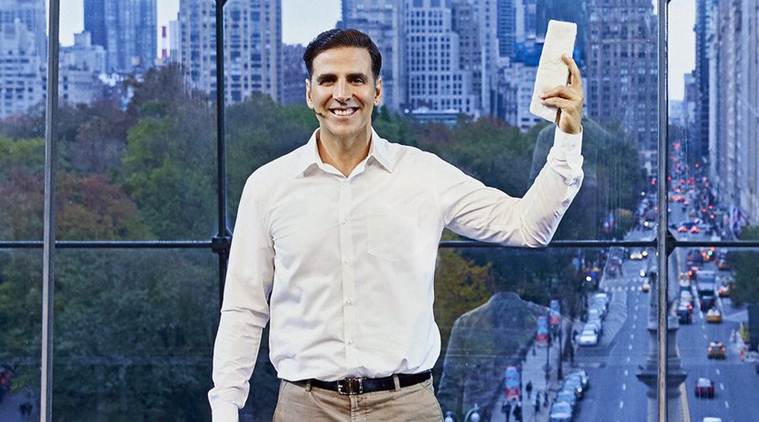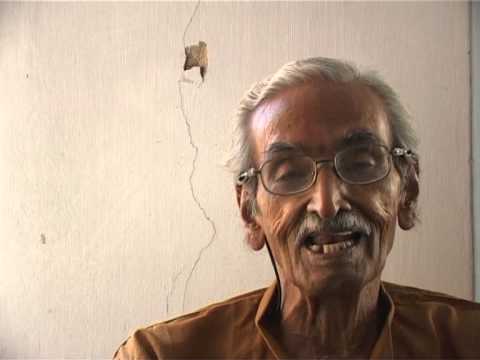One of the posters of Thondimuthalum Driksakshiyum, an upcoming Malayalam film, has the image of a small, shabbily-dressed man squatting on the floor. His head is slightly titled upwards, and a gamut of expressions flit across his face: anxiety, resignation and something veiled. After a closer look, you realise that the man in the photograph is Fahadh Fazil, the actor whose last performance on screen was that of a sophisticated diplomat in Mahesh Narayanan’s Take Off.
 Thondimuthalum Driksakshiyum, directed by Dileesh Pothan, has a long, chaste Malayalam title that the audience outside of Kerala might not take an instant liking to. But the sublime minimalism of the film’s posters could easily even out the weight of the title. Designed by Sreejith N of Kochi-based design firm Old Monk, the posters and title cards of the film are very cinematic, brimming with a sense of life that is rare to find in movie posters in this part of the world. The characters are not facing the camera, but engrossed in affairs in the film’s world that we have no access to so far.
Thondimuthalum Driksakshiyum, directed by Dileesh Pothan, has a long, chaste Malayalam title that the audience outside of Kerala might not take an instant liking to. But the sublime minimalism of the film’s posters could easily even out the weight of the title. Designed by Sreejith N of Kochi-based design firm Old Monk, the posters and title cards of the film are very cinematic, brimming with a sense of life that is rare to find in movie posters in this part of the world. The characters are not facing the camera, but engrossed in affairs in the film’s world that we have no access to so far.
“I do not see the title of a film as a part of its marketing strategy. I can’t think of a better title for this film. Even my first film had a long name – Maheshinte Prathikaaram,” says Dileesh. “We used real stills from the film for the posters. Sreejith and I discussed a little about the film’s concept, and he did the rest. We wanted the posters and the teaser to reflect the over-all mood of the film, rather than lure the audience to theatres. This is a realistic film. So we wanted the posters to have that naturalness.”
Another poster of the film has an image of a set of policemen leading a hand-cuffed Fahadh through dry grasslands. It may instantly remind a cineaste of an iconic image in Turkish director Nuri Bilge Ceylan’s Once Upon a Time In Anatolia, where a group consisting of policemen, detectives and a lawyer, take a hand-cuffed crime suspect through the endless grasslands of Anatolia to recover the corpse of a man the latter had killed and buried the previous night.
*****
Thondimuthalum Driksakshiyum is the second directorial of Dileesh, whose first film was the brilliant warm drama, Maheshinte Prathikaram, that won the National Award for the best screenplay in 2016. Set in a high-land village in Idukki, Maheshinte Prathikaram narrated a coming-of-age story of a nondescript photographer, played by Fahadh Fazil. In Thondimuthalum Driksakshiyum, Dileesh teams up with Fahadh once again. The actor plays the role of a thief, one of the two lead characters in the film, the majority of which unfolds inside a police station. The other lead is played by National Award-winning actor Suraj Venjarammood.
Around 25 real-life policemen have acted in this film. “We did a casting call, inviting policemen who wanted to try their hand at acting. The training they have got in their profession helps when they act as a policeman in the film. An actor might not be able to imitate that body language and mannerisms to that perfection.”
The initial cast of the movie was slightly different, says Dileesh. “Fahadh was supposed to play the role that Suraj ended up doing, and the other lead role was supposed to be played by Soubin (Shahir). However, we changed the plan after Soubin got busy with his directorial debut, Parava. I am pretty sure the movie that we finally made, is very different from the movie it would have been, if we had gone with the initial cast.”
The first teaser of the film was released on June 2. Featuring a fragment of a scene from the film, it has Fahadh and Suraj having a sombre conversation in a dimly-lit room. The intriguing teaser hides more details than it reveals. “I wanted to focus on the curious dynamics between these two characters. That particular scene gives a clue about it,” says Dileesh.
“Also, there is another reason as to why I chose that scene for the teaser. I want the audience to know that this isn’t a light-hearted film like Maheshinte Prathikaram. This isn’t a feel-good film. It is darker, and I believe, a better work than my first film.”
The film is shot by Rajeev Ravi, ace cinematographer, who is also an acclaimed filmmaker. “We shot it in the order of the screenplay, starting from the first scene, improvising immensely on the go,” says Dileesh. The team planned and rehearsed every single scene before they went for the take. “The final film, in fact, is Rajeev Ravi’s perspective of the story. You will watch the film through his eyes – how he perceived the characters and the plot.”
Recommended
The film is shot in Kasargod, and partially in Vaikkom. “If Maheshinte Prathikaram was also a portrait of the space where it was shot, this film has a universal theme. It could happen anywhere – in a city, small town or a village. I chose to shoot it in Kasargod because I thought on such a landscape, this story could seamlessly fit in, and look totally credible.”
36-year-old Dileesh is aware of the hype around the film, for it follows a highly popular and critically-acclaimed debut film, Maheshinte Prathikaram. Nevertheless, he claims to be unaffected by the pressure. “I do not make a film because I want to build up a steady career. I made this film because I was hooked to the story when I listened to it first. I will make a film only if I feel passionate about it. I am not very ambitious. I am a lazy man.”
*****



